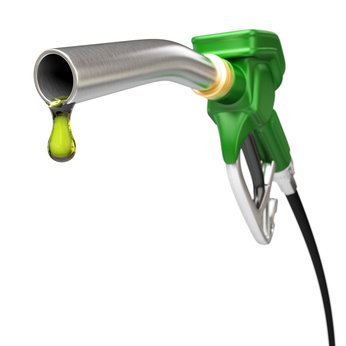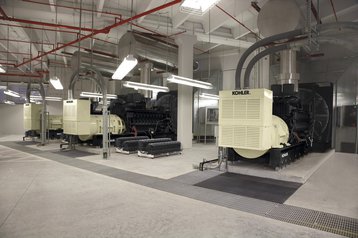Sustainable growth is a top priority in Southeast Asia's rapidly expanding data center sector.
From digital hotspots like Singapore and Hong Kong to emerging countries such as Vietnam, Cambodia and Thailand, there is a strong desire to design and build greener data centers with reduced energy consumption and improved energy efficiency.
But realizing the vision of a sustainable data center is no easy task. It can only be achieved through committed research and development strategy comprising a twin-track innovation process based on evolutionary and revolutionary technologies.
For diesel generators, specifically, that means incremental advances in several key areas such as engine optimization and after-treatment. Meanwhile, radically new approaches to power generation are represented by the adoption of batteries and fuel cells, which offer the potential to eliminate harmful emissions at the source.
At Kohler, a relentless spirit of innovation provides impetus in both areas. Specialist teams of engineers within in-house laboratories work tirelessly with industry partners in Southeast Asia and other parts of the world to deliver on the promise of more sustainable data centers.
However, these efforts don't come to fruition overnight, they represent a long-term commitment to cleaner generator performance and other mission-critical technologies that remain essential to reliable power generation.
Rapid advances in engine technology
So let us look at some of the evolutionary and revolutionary advances and how they have come about. The single most crucial piece of equipment for the generator is the engine – sometimes gas, but predominantly diesel.
In recent years, diesel technology has progressed rapidly, primarily in response to stricter emissions legislation being imposed by regulators both locally and globally.
Subsequently, engineers have deployed software-based techniques as finite element analysis to continually optimize internal engine design, resulting in enhanced performance efficiency.
These refinements are often combined with the adoption – when needed – of exhaust gas after-treatment technologies such as diesel oxidation catalysts, diesel particle filters, and selective catalytic reduction to reduce the release of harmful emissions into the atmosphere.
As a result of these advancements, Kohler generators comply with all relevant emissions standards across Southeast Asia.
The benefits of biofuels
Other evolutionary 'pathway' technologies are coming to the fore. These include the increased adoption of new blends of bio-sourced 'green' diesel, which can lower CO2 emissions by up to 80 percent over the entire lifecycle.
However, the specific composition of these fuels creates challenges around storage stability, corrosivity, and ageing due to microorganisms.
Kohler's research and development teams have worked with industry partners to help develop and assess new hydrotreated vegetable oil (HVOs) – paraffinic bio-based liquid fuels produced from existing farm-based feedstocks, including rapeseed, sunflower, and soybean oil. These are straight-chain hydrocarbons free of aromatics, oxygen, and sulphur, and can deliver high cetane numbers.
Importantly, HVOs can be produced without compromising fuel quality. They can be stored more easily than other biodiesels, and they offer a 'slot-in' solution that can be used in conventional diesel engines at facilities such as data centers.
Consequently, most of Kohler's diesel industrial generators are already compatible with HVO paraffinic synthetic biofuels, while also being compatible with FAME (Fatty Acid Methyl Ester), a renewable fuel produced from vegetable oils, animal fats or waste cooking oils through a process of transesterification.
Kohler continues to analyze and assess new types of cleaner fuels for diesel generators, predicting further emissions-reducing benefits in the future.
Introducing batteries and fuel cells
So those are some of the evolutionary technologies for generators helping to create the more sustainable data centers of the future. But what about exciting, step-chain revolutionary solutions such as batteries and fuel cells? Might these emerge as alternatives to diesel generators for backup supply power in data center applications over the longer term?
The answer, at this stage, is possibly. For example, utility-scale batteries, underpinned by advances in lithium-ion technology and combined with renewable energy supply, could represent a potential solution.
Some hyperscale operators are researching megawatt-scale battery systems, with trials assessing technical characteristics such as energy density and space requirements.
Interestingly, renewables-plus-storage techniques could potentially be used for grid service applications – with on-site batteries at facilities such as data centers being used to help utility companies manage fluctuations on the grid.
The challenges around battery-based systems come with such problems as reliability, quality, and cost-effectiveness, but intense research and development activities are being conducted to overcome these concerns.
Hydrogen fuel cells represent exciting technology as a solution for environmentally friendly backup power. Again, data center operators and their industrial partners are implementing proofs-of-concept with proton exchange membrane fuel cells combining hydrogen and oxygen in a process that produces water vapour and electricity.
For instance, a 250-kilowatt fuel cell system has been used to power a row of data center servers for 48 consecutive hours in one specific trial.
The challenge with hydrogen comes with scalability and cost. At grid-scale, widespread infrastructure investment would be required to procure, store, and maintain a sufficient hydrogen supply to power generators.
It is estimated that to run 30MW of IT equipment for 48 hours would require 100 tons of hydrogen. A delivery truck can carry two tons of hydrogen – so around 50 shipments would be needed for a two-day outage. That requirement would present significant logistical challenges at places like data centers for on-site storage and concerns over supply chain constraints.
But hydrogen does remain an exciting possibility, and Kohler is developing a prototype 60 kW hydrogen generator using PEM (Polymer Electrolyte Membrane) fuel cell technology as part of a research effort to analyze performance capabilities and understand the challenges of scale.
New talent acquisition
The final piece in the jigsaw comes with a better understanding of how clean energy management systems – essentially the way that distributed energy sources can be connected and optimized for performance enhancement. Here Kohler has been making advancements, too, particularly through acquisition.
Most recently, US-based Heila Technologies became part of Kohler, bringing world-leading expertise in how distributed energy sources such as batteries, fuel cells and solar arrays can be integrated to create a modular microgrid, providing reliable power when the grid cannot. This could provide a more flexible energy architecture for the more sustainable data center of the future.
It is evident, then, that sustained research and development effort – combined with world-leading expertise brought in via acquisition – holds the key to a greener data center sector, here in Southeast Asia and other parts of the world.
Indeed, Kohler believes evolutionary and revolutionary technologies will converge to create more sustainable solutions for the benefit of all.
More from Kohler
-

Sponsored Optimizing data center power provision using a building-block approach
The diversification of data center architectures means that buyers should make sure their genset suppliers can optimize designs for a wider range of uses and locations, says Kohler's Richard Russett
-

Sponsored The sustainability collaboration opportunity
Why as an industry, we can achieve so much more together
-

Sponsored How to give your generator a sustainability advantage
With backup power and sustainability essential to any data center, are diesel generators finally turning over a new (greener) leaf?


